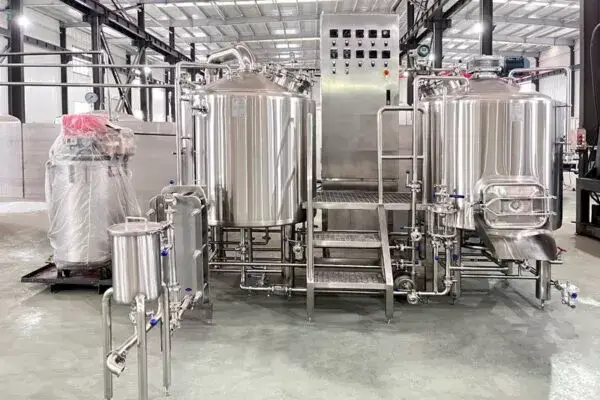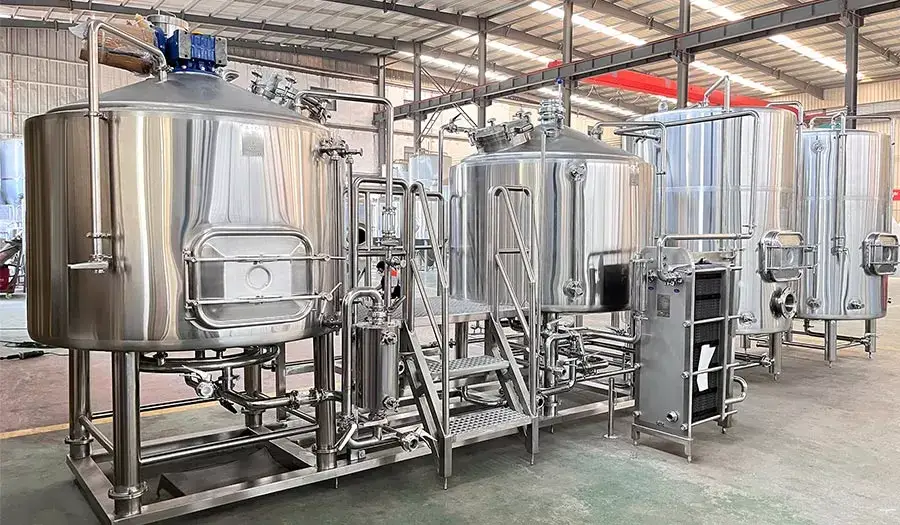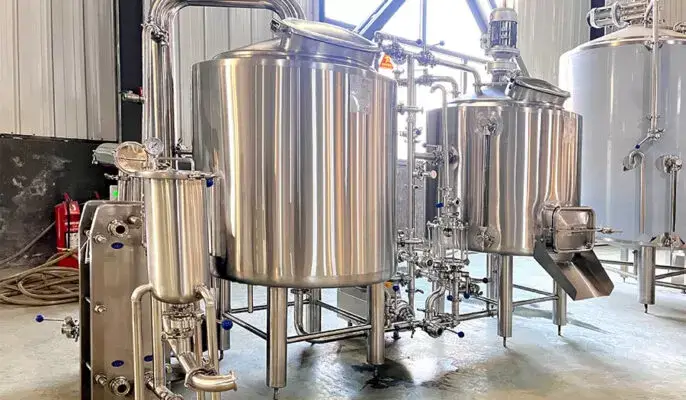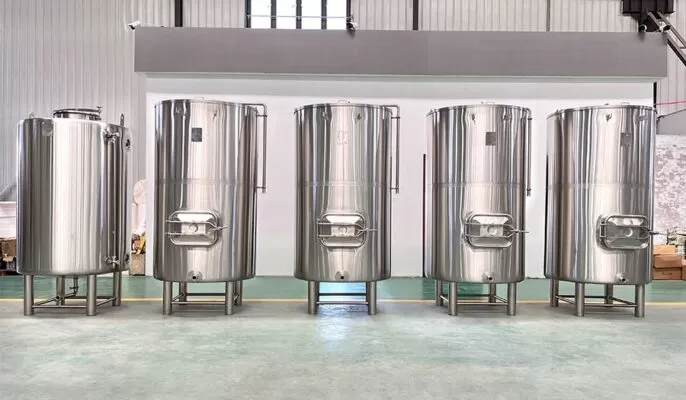Professional brewing equipment refers to the specialized systems and components used to produce beer on a commercial scale. Choosing the right equipment is crucial for breweries to meet production targets, ensure beer quality and consistency, and operate efficiently.
This guide covers key considerations when selecting pro-grade brewing hardware.
professional brewing equipment Types
Professional brewery setups comprise complex configurations of tanks, vessels, pipes, controls, and peripherals. Main equipment categories include:
| Equipment | Description |
|---|---|
| Brewhouse | Mixes milled malt (grains) and water to extract sugars and convert starch into fermentable wort. Contains mash tun, lauter tun, brew kettle. |
| Fermentation Tanks | Ferments sweet wort into alcohol and CO2. Usually stainless steel or plastic cylindrical containers fitted with temperature control, cooling jackets and airlocks. |
| Bright Beer Tanks | Clarifies and filters fermented beer, removes yeast sediment. Pressurized to carbonate before packaging. |
| Packaging Machines | Fills containers like glass bottles, aluminum cans, kegs. Equipment for pasteurization, labeling, sealing. |
| Piping and Pumps | Moves liquids, wort, beer between process stages. Flow control valves for precise metering. |
| Control Systems | Automated hardware and software to monitor, analyze, adjust parameters during brewing. Sensors for temperature, pH, gravity, foam control; HMI interfaces. |
| Clean-in-place (CIP) | Specialized cleaning apparatus for tanks, lines – caustic/acid solution tanks, spray balls, high-pressure pumps and nozzles, air blowers. |
| Grain Handling | Equipment to deliver, measure, mill malt. Conveyors, elevators, silos, roller mills |
| Quality Control | Lab gear for testing – spectrophotometers, microscopes, density meters, chromatography kits |
Considerations for Selection
Key factors guiding professional brewery equipment selection:
| Parameter | Details |
|---|---|
| Production Volume | Batch sizes, annual beer output targets. Dictates equipment capacity. |
| Floor Space | Dimension limits for facilities. Equipment footprint must fit. |
| Flexibility | Ability to produce varied beer styles – ales, lagers, experimental. |
| Automation Level | Operator attention needed. Controls complexity vs usability. |
| Expandability | Scope to incrementally add tanks, scale up system. Modular design. |
| After Sales Support | Installation, maintenance and service backup from vendor. |
| Budget | Equipment costs, operating expenses – power, water etc. Total capital investment. |
| Delivery & Installation | Lead times. Positioning rigging access inside brewhouse. |
professional brewing equipment Suppliers and Pricing
Choosing the Right Supplier
Launching a brewery is a dream for many, but turning that dream into reality hinges on crucial decisions—one of the most significant being the choice of your professional brewing equipment supplier. With a dizzying array of options available, selecting the right partner can feel daunting. Fear not, fellow brewing enthusiast, for this guide will equip you with the knowledge to navigate the market and find the supplier who perfectly complements your vision.
First things first, define your needs. Are you a fledgling nano-brewery starting small, or are you envisioning a high-volume production facility? What types of beers do you plan to brew, and what level of automation are you seeking? Answering these questions will help you narrow down your search and focus on suppliers who align with your specific requirements.
Reputation and experience are key. Seek out established suppliers with a proven track record in the industry. Look for positive testimonials from breweries similar to yours and delve into the supplier’s history and expertise. Are they known for innovation and adaptability? Do they offer ongoing support and service? Partnering with a supplier who understands your industry and can anticipate your future needs is invaluable.
Price shouldn’t be the sole motivator. While cost is undoubtedly a factor, remember that cheap often translates to compromised quality. Focus on value—reliable equipment that meets your needs and offers longevity, backed by strong after-sales service. Compare warranties, maintenance support packages, and financing options to ensure you’re getting the best bang for your buck.
Communication is paramount. Establish a clear dialogue with potential suppliers. Discuss your budget, timeline, and specific needs in detail. Do they actively listen and offer tailored solutions? Are they readily available to answer your questions and address concerns? Transparent communication throughout the process is crucial for building trust and ensuring a smooth experience.
Don’t underestimate the power of a site visit. If possible, visit the supplier’s facilities to get a firsthand look at their operation. Observe their manufacturing process, assess the quality of their equipment, and interact with their team. This personal connection can solidify your decision and give you a deeper understanding of their capabilities.

Professional Equipment Costs
The dream of brewing your own beer on a professional scale is exhilarating, but the reality can be a tad sobering. The gleaming stainless steel tanks and intricate machinery come with a hefty price tag, and navigating the financial landscape can feel overwhelming. Fear not, aspiring brewmaster, for this article will shed light on the costs associated with professional brewing equipment, equipping you with the knowledge to make informed decisions.
Setting the Stage: Sizing Matters
The first and most crucial factor influencing price is the size and capacity of your brewery. Are you envisioning a cozy nano-brewery catering to a local crowd, or a sprawling production facility churning out kegs for national distribution? The scale of your operation directly impacts the size and quantity of equipment needed, and consequently, the overall cost.
The Big Ticket Items: Brewing the Core
Let’s delve into the heart of the matter: the core equipment. The mash tun, where the magic of converting grain to sugar happens, starts around $5,000 for smaller models, reaching $50,000 or more for larger ones. The brew kettle, responsible for boiling the wort and adding hops, follows a similar range, with basic models starting at $3,000 and high-end options exceeding $20,000.
Fermentation Vessels: The Aging Chambers
Fermentation tanks, where yeast transforms wort into beer, are another major expense. Expect to pay $10,000-$25,000 for smaller tanks suitable for nano-breweries, while larger facilities might require vessels costing $50,000-$100,000 or more. Remember, the number of tanks needed also impacts the overall cost.
Beyond the Essentials: Automation and Refinements
While the core equipment forms the foundation, additional elements can elevate your brewery. Brewhouse automation systems, ranging from basic controls to sophisticated recipe management, can add $10,000-$50,000 to the price tag. Bottling lines, kegging machines, and filtration systems further increase the cost, depending on their complexity and capacity.
Remember, the Price is Just the Beginning
It’s crucial to remember that the initial equipment cost is just the tip of the iceberg. Installation, calibration, and ongoing maintenance add to the overall expense. Additionally, utilities, and licensing fees contribute to the financial equation.
Planning for Success: Budgeting Wisely
The key to navigating the financial landscape is meticulous planning. Conduct thorough research, compare quotes from multiple suppliers, and factor in all associated costs. Consider starting small and scaling up gradually as your business grows. Remember, the most expensive equipment isn’t always the best solution; prioritize quality and functionality over unnecessary bells and whistles.
Selection Criteria
How to choose the best pro-grade brewing equipment supplier?
| Factor | Evaluation Aspects |
|---|---|
| Product Quality | Commercial grade 304/316 stainless steel<-br>Welds, surfaces, smooth finish |
| Reliability & Durability | Thickness, corrosion resistance, insulation jacket |
| Capacity Range | Standard volumes offered for fermenters, BBTs <-br> Ideal batch sizes |
| Customization | Tank modifications, pipe routing, layouts |
| Control Systems | Automation level offered, data tracking features |
| Certifications | ASME pressure vessel code, 3A sanitary standards |
| Installation Services | Positioning, rigging access for tanks, assembly |
| Maintenance & Support | Manuals, training, troubleshooting response times |
| Reputation & Experience | Years in business; client reviews |
| Overall Value | Price to performance ratio |
FAQ
What are the basic professional brewing system components?
The core equipment in a commercial brewhouse comprises – mash tun and lauter tun to make sweet wort from milled grains; brew kettle to boil wort with hops; fermentation tanks; bright beer tanks; filtration gear; and packaging equipment.
What size system for a new microbrewery?
For a startup microbrewery aiming 5000 barrels annual volume, a 3 barrel brewhouse with ~10 fermenters and BBTs of 7 barrel capacity allows flexible production batch sizes.
Cost for a 10 barrel brewhouse system?
A complete 10 barrel brewhouse with 4 fermenters, 2 BBTs, glycol chiller, steam generator and automated controls would cost $250,000 to $400,000. Consult brewhouse manufacturers for current pricing.
Stainless vs plastic fermenters – which is better?
Stainless steel is more durable but plastic is cheaper. Stainless allows recycling hot liquids to speed production. Plastic easier to scratch and hard to fully sanitize. Stainless better for commercial scale and proven reliability.
What is professional brewing equipment?
Professional brewing equipment refers to specialized machinery and tools used in the production of beer or other alcoholic beverages on a commercial scale. This includes equipment for mashing, fermenting, conditioning, packaging, and more.
What are the key components of a professional brewing system?
A typical professional brewing system includes a mash tun, fermenters, bright tanks, kettle, pumps, heat exchangers, kegs, bottling or canning lines, and various tanks for ingredient storage.
What size of brewing system should I consider for my brewery?
The size of your brewing system depends on your production goals. Consider factors like the size of your brewery space, budget, and expected demand. Common sizes range from small-scale, like 1-5 barrels, to large-scale, such as 30 barrels or more.
What types of heating methods are used in brewing equipment?
Brewing equipment can use various heating methods, including steam, electric, and direct fire. The choice depends on the scale of production, energy costs, and personal preference.






